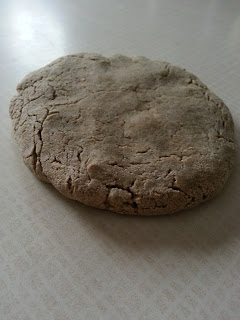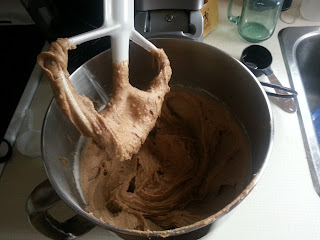Good day mates, one of the questions that people ask me most frequently is what the best sugar substitute is. The answer to that one is completely dependent on why you need to substitute the sugar. In some recipes, sugar only plays a role to sweeten things, in this case you can use any kind of sugar substitute you want. In other cases (usually in baking) sugar plays a specific chemical role to create your product. If you are substituting sugar in a baked good where a specific reaction is needed, I would recommend using a substitute that reacts similarly to sugar. Below, let me talk about some of the alternatives.
Why?
First off, lets talk about WHY we are doing this in the first place. Lets look back to my post on sugar. Sugar is a simple carbohydrate, meaning it takes little to no work at all for it to be utilized by our bodies. What's the result? Massive amounts of Sucrose (a combination of Glucose and Fructose) entering our system. All our body needs to do is split the Glycosidic Bond, convert Fructose to Glucose, then it's off to make ATP. Simple right? too simple unfortunately. Since our body can do this almost effortlessly, our blood sugar levels sky rocket causing our insulin levels to spike in order to deal with the problem. Unfortunately, the function of Insulin is to take the sugar and store it as glycogen in our muscles or triglycerides in our fat cells. That's right, sugar makes you fat! In fact, sugar will actually make you more fat than consuming fat will! who knew right?
Alternatives?
Okay, so, lets just say that there is a LOT of alternatives out there to granulated sugar, and I'm not talking about brown sugar, turbinado sugar or the supposed 'raw sugar.' These are simply different shades of the same colour. Some of the alternatives are good, some are bad, and some are simply misleading...
Before I get into this, I just wanted to quickly mention the glycemic index. You have probably already heard about it, and know that things that are low are good, and things that are high are bad. Basically, the glycemic index measures how much your blood sugar (glucose) will rise after eating a specific type of food. Pure glucose is given a value of 100. Every food source is going to have a value since everything has some form of carbohydrate that can be converted to glucose. For example, whole wheat bread has an average glycemic index of 71 and the glycemic index of dark chocolate (70% dark) is 22. Granulated sugar has a glycemic index of 68.
The Good
Stevia
Stevia uses the sweet leaves of the
Stevia rebaudiana plant. Stevia has a sweetness that is about 40-300 times more than that of sucrose, making it a popular sweetener. Depending on the specific species that is used, sometimes there is a bitter almost licorice after taste. Best of all, Stevia is a zero calorie sweetener (meaning it has a glycemic index of 0) and it reportedly reacts similarly to sugar in baking recipes. There was a degree of controversy surrounding stevia. When it was first introduced in 1991 there was an 'anonymous' complaint to the FDA which caused them to reject Stevia as being harmful. There were allegations that this complaint and the subsequent ban was due to internal pressure from the artificial.
Monk Fruit
Monk Fruit is another zero calorie sweetener (having a glycemic index of 0) that is about 200 times sweeter than sugar. This sweetener is usually available in liquid form, since the sweetness is usually extracted by crushing the plant and then infusing hot water. It would be best to use this one as a sweetener rather than a baking substitute. There are also no safety concerns that are associated with Monk Fruit.
Coconut Palm Sugar
This sugar is made from the sap that is extracted from the buds of the coconut palm trees. This sugar is mildly sweet with a hint of caramel to it (kind of like brown sugar). This sugar is mostly sucrose with some glucose and fructose and can be used as a direct substitute for white or brown sugar in baking. Now you may have noticed the fact that this stuff is still pretty much sugar, it is lower on the glycemic index because of the sucrose and has a value of 35. The good aspect is that this is a WHOLE sugar and contains potassium, magnesium, zinc, and iron, as well as Vitamin B1, B2, B3, and B6. Woot.
Maple Syrup
Just like coconut palm sugar, maple syrup is also mostly sucrose, but has impressive amounts of minerals in it. If you consume 100g of maple syrup, which shouldn't be too hard (it's about 1/3 cup) you get Calcium
67 mg (7% DV), Iron 1.20 mg (9% DV), Magnesium 14 mg (4% DV), Manganese
3.298 mg (157% DV), Potassium
204 mg (4% DV), and Zinc 4.16 mg (44% DV). For all of you who read the post on
Excitotoxins you may remember that Zinc and Magnesium help to block the effects of excitotoxins on glutamate receptors. Maple syrup is also reported to have a large amount of polyphenols including one called Quebecol is unique and is created during the boiling process. Polyphenols are antioxidants that are helpful in fighting inflammation.
There has been some talk that the large producers use antifreeze to keep their sap lines from freezing up. This may cause the harmful chemical to make their way into the product. It's always best to buy locally from a producer you can trust, or even better, make it yourself! This is good news for me and my pancakes!
The Bad
Aspartame
Well, Aspartame is bad for you for a whole host of reasons. For those of you who have not done so yet, check out the posts on Aspartame and Excitotoxins for more info.
Equal
Equal is an artificial sweetener that contains dextrose, aspartame (1.7%), acesulfame potassium (1.2%), starch, silicon dioxide (an anti-caking agent), maltodextrin, and unspecified flavouring. Equal tablets may also contain lactose.
Aceslfame Potassium is another type of sweetener. So far there are not any documented problems with it, however, studies done on the topic have not been very thorough and do not track long term effects. Despite this problem, the FDA is still cool with it being on the market. One of the components of this chemical is methylene chloride, a known carcinogen. Long-term exposure to methylene chloride can cause headaches, depression, nausea, mental confusion, liver effects, kidney effects, visual disturbances, and cancer in humans.
The percentage in a pack of equal is relatively low, however, given the lack of longitudinal studies, I give this one a thumbs down.
Sweet n' Low
Contains Saccharin, dextrose, and cream of tartar. The problem child we're going to look at is saccharin.
One study in India found individuals eating 137% of the FDA's maximum recommended intake resulting in bladder distention, bladder cancer and urine osmolality.
A 2008 study by The University of Rostock in Germany found that saccharin artificially increases your insulin levels. This will result in hypoglycemia as well as increased weight gain as glucose is sequestered from your blood.
Before May 2000 the US National Toxicology Program had saccharin listed as a potentially cancer causing agent. It has since been removed, however, I have not found any studies that explain why this happened.
Dextrose
I figured I would put this in, just in case if you aren't aware of what dextrose is. It is simply the stereoisomer (left handed form) of the glucose molecule. Aside from that simple point in chemical arrangement, they are the exact same thing. Don't be fooled when you look at a package, it is not a good guy.
The Ugly
Splenda
I classify Splenda as being ugly since there is no definitive proof showing that it is good or bad either way.
Honey
I'm sorry to say it, but honey, while tasting excellent is not exactly good for you. Honey contains a massive amount of sugar, the main components are Fructose: 38.2%, Glucose: 31.3%, Maltose: 7.1%, Sucrose: 1.3% ,Water: 17.2%. That's right, it's about 78% sugar with a glycemic index that ranges from 31-78 depending on the study and the type used.
Honey has a large amount of antioxidants and also has trace amounts of other nutrients, but here is the problem. Unless you use RAW honey, your goodness is destroyed in pasteurization. You can usually find raw honey in the organic section of your grocery store. It is probably okay to eat it as is, ie: put it on toast or mix it into salad dressing or something like that. DO NOT cook with it, bake with it, and be careful how hot your tea is if you add it in there too. Reaching 145F (62C) is enough to destroy most of the nutrients in the honey
Agave Syrup
The Agave situation is a little bit tricky. It became a very popular alternative to sugar because of the fact that it has a very low glycemic index (only about 15-30). The reason for this is the fact that Agave is composed almost entirely of Fructose. Do you ever hear about all the flack that High Fructose Corn Syrup (HFCS) gets? Well agave nectar really isn't that different from HFCS. Agave can be around 70% fructose, and there is a big problem with that. Man made Fructose does not get processed in our intestines, but rather in our liver. Since it is processed in our liver, our blood glucose levels do not rise, BUT at the liver it is being converted into triglycerides (fat). Also, high levels of fructose will inhibit your leptin levels, making it so your body is not full and in fact will crave more food.
There have also been some health concerns with Agave in regards to how it is processed. Some claim that the syrup is created using digestive enzymes as well as chemical factors to separate and distil the syrup. The FDA has actually rejected shipments of agave due to excessive pesticide residues. I would have thought any residue was too much.
Well, this is my list. If you have any questions are think that I may have forgotten something along the way, let me know!














